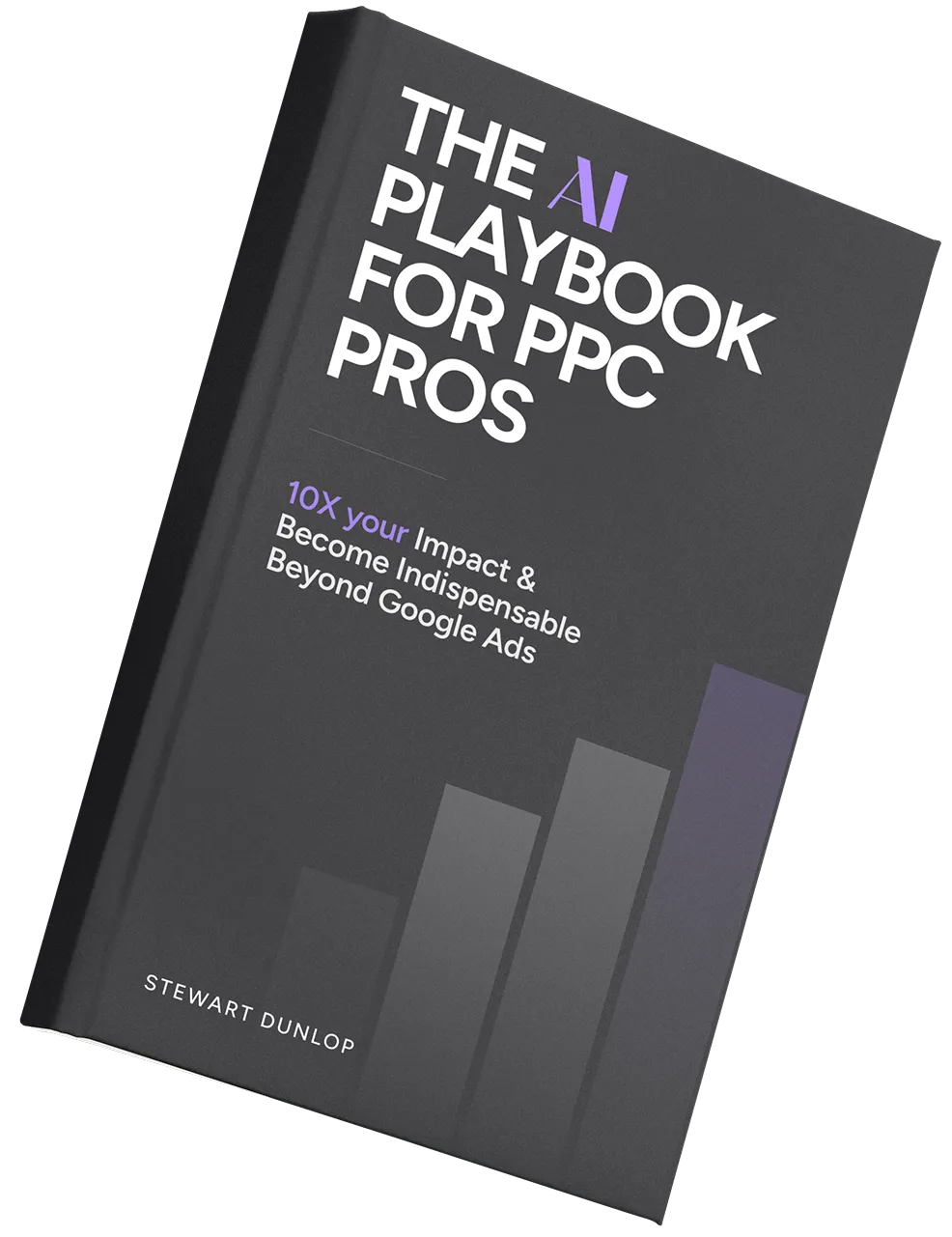
Marketing Mix Modeling Tools (MMM tools for short) help marketers & advertisers know exactly where to allocate more of their marketing budget.
Key Benefits of MMM Tools
- Identify underperforming marketing channels
- Eliminate wasted marketing spend
- Forecast future performance
- Prove incremental contribution of each channel
- Know exactly what the optimal spend should be across each advertising platform
What are marketing mix models?
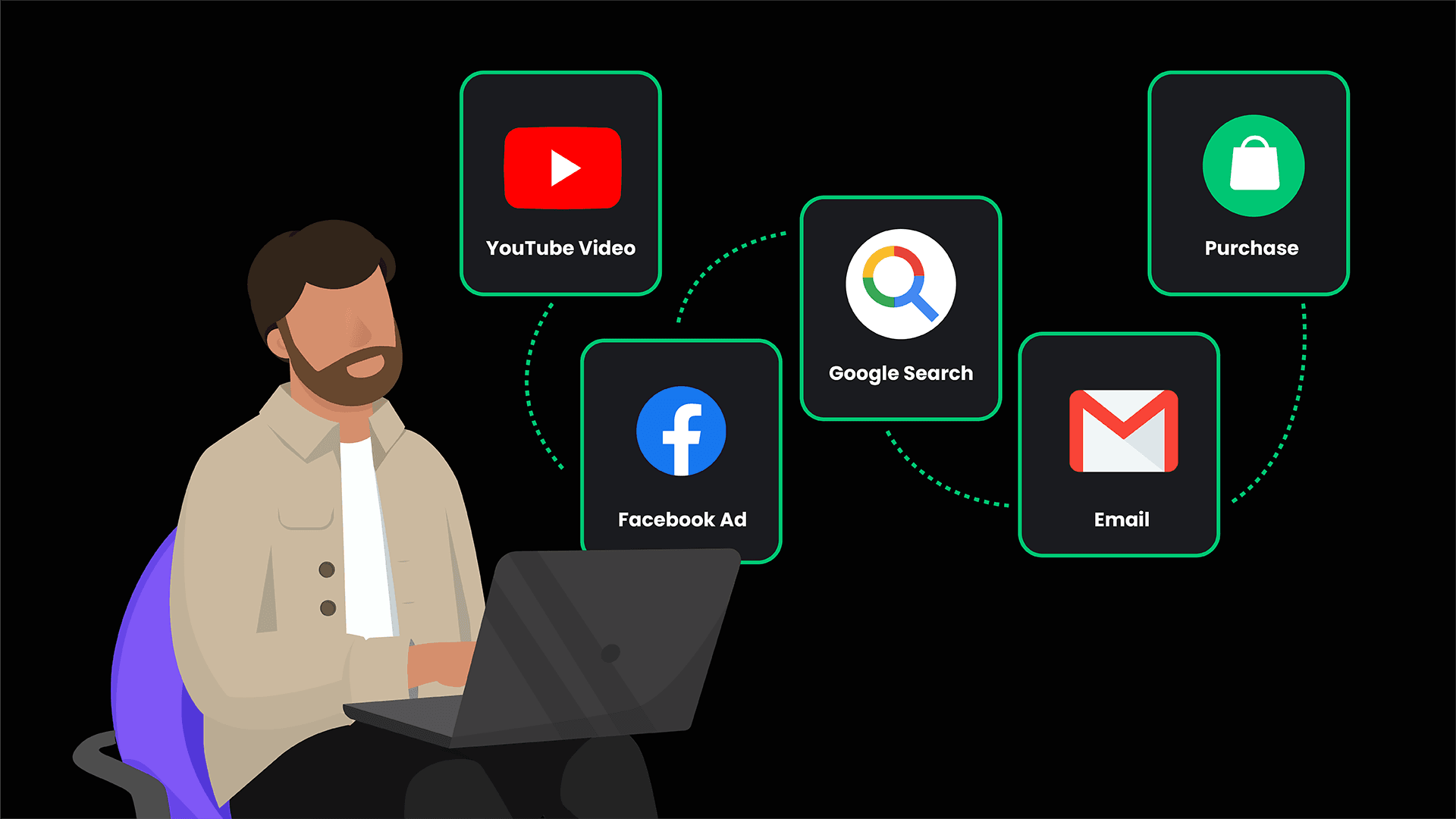
Marketing Mix Models are smart computer programs that help us figure out exactly what marketing channels are most effective without bias.
These models use statistical techniques to analyze past marketing data and find out how various marketing actions (like adverts & promotions) have impacted sales or leads.
The aim is to understand what combination of these actions works best.
Marketing Mix Modeling Tools don’t make guesses or assumptions.
They aim to completely remove human bias by analyzing large amounts of data.
MMM tools use math and machine learning to understand exactly how each marketing channel contributed to your past sales.
Then, they tell you how you can better optimize your marketing budget.
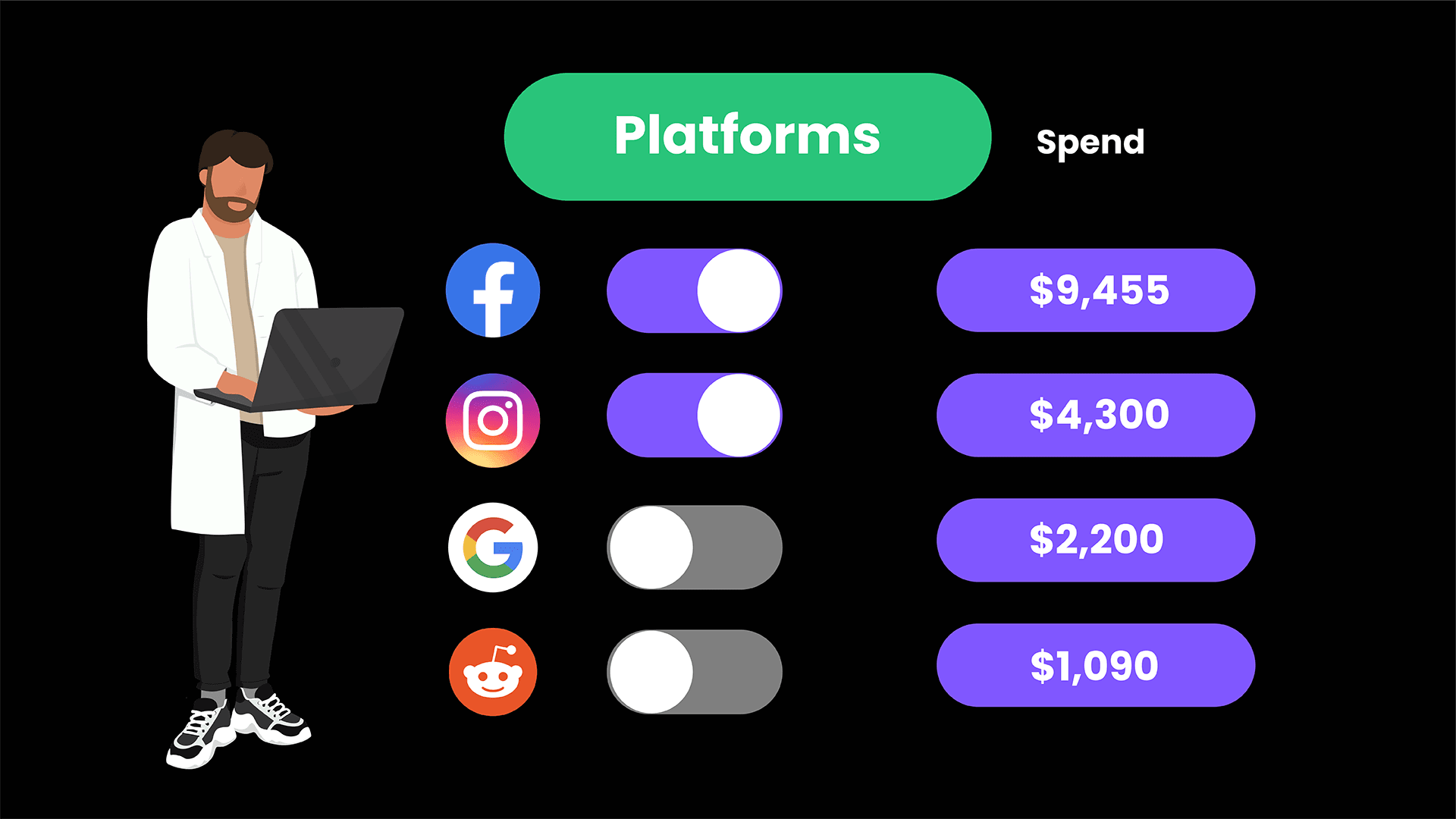
Here’s how MMM tools work in simple terms
- You feed the model all of your past marketing data.
- Feed the model all of your past sales & CRM data as well.
- The MMM will run some very complicated machine learning algorithms, and calculate the real impact of each marketing channel.
- The model will also predict the future correlation of ad spend vs revenue.
This allows marketers to create their budgets backed by real data, not guesswork.
Additionally, the model will get smarter over time as you feed it more data.
This Is truly AI at work - You’re feeding a ton of data into a tool and letting a complex algorithm generate results for you by doing thousands of hours of calculations in a matter of seconds.
Why is MMM Important?
As companies evolve with their marketing and start advertising on more and more channels (Meta, Google, Bing, TikTok, Reddit etc.) it becomes difficult to understand how each one of those channels is actually contributing to your business outcomes.
Every single ad platform is incentivized to attribute a conversion to their own platform, obviously.
So what often happens is that these platforms will overreport on conversions, and once we add up the total number of conversions across platforms, the final number doesn’t make sense! It’s much too high!
This is because of the attribution window for most of these platforms, leading them to each ‘claim the conversion’ if the user interacts with their advert at any stage in the journey.
Most importantly, it completely removes human bias from the picture.
For example, I might like to assume that our Facebook ad campaigns are driving incredible value to our overall marketing picture.
But when I run the model, I discover the impact isn’t as high as expected, and that I should in fact be allocating more budget to my Google ads instead.
Marketing Mix Modeling (MMM) Tools
OK, now we’ve covered all of the basics, let’s talk about MMM tools.
Unless you’re a data scientist / computer scientist, you’re going to require a MMM tool in order to run a model yourself.
These tools come with a user-friendly interface that allows mere mortals to easily input their data and visualize the results without knowing how to read incredibly complicated mathematical formulas and outputs.
1) Northbeam
- Our favorite overall MMM tool
- Starts at $1,000 per month
- Great user interface

What Northbeam does:
- Delivers advanced MMM+ technology: Northbeam's media mix modeling platform is enhanced by machine learning that captures complex channel interactions and is updated weekly for real-time relevance.
- Offers powerful visual tools for decision making: The platform features an interactive dashboard with visual outputs like cost curves and budget scenarios, designed to inspire decisive action and facilitate easier scenario planning and model evaluation.
- Provides expert strategic support: Monthly white glove support from Northbeam's experts helps brands understand and apply the platform's insights quickly and effectively, ensuring that strategic marketing decisions are both data-driven and timely.
👉 Who it's best suited for:
Northbeam is ideal for brands looking for a sophisticated, yet user-friendly media mix modeling solution that offers both depth in analytics and breadth in forecasting capabilities. It is particularly beneficial for those who need ongoing expert guidance to navigate complex budget scenarios and drive profitable growth.
2) Prescient AI
- Tailored primarily for Ecommerce brands
- Raised $10m in funding in 2024
- Reveals campaign & channel level insights on a daily basis
- Pricing is competitive with industry standards
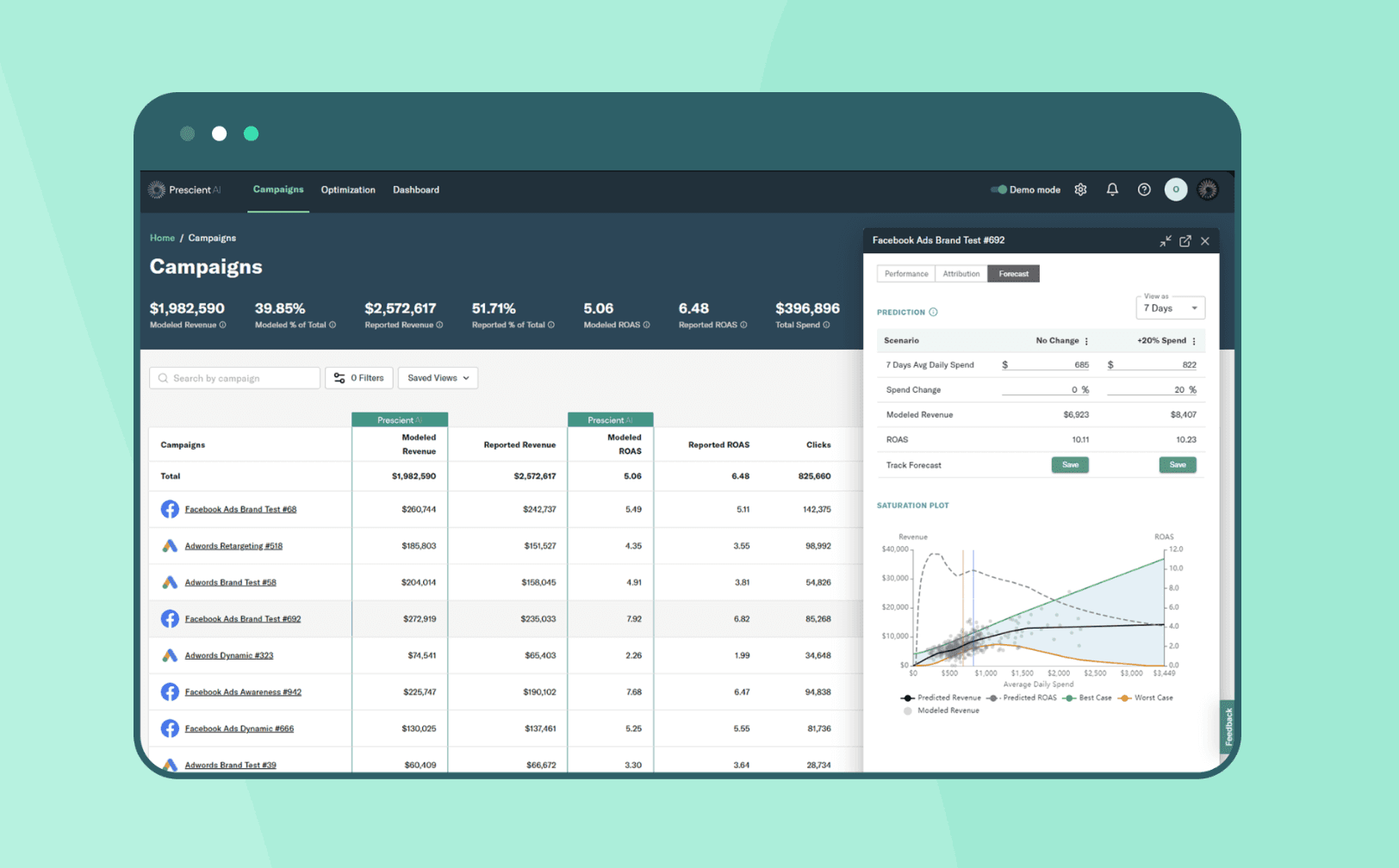
What Prescient AI does:
- Uses advanced AI technology: Prescient AI leverages cutting-edge machine learning and AI to deliver daily channel- and campaign-level insights, allowing brands to understand and optimize their marketing efforts in near real-time.
- Gives rapid, actionable insights: With onboarding in just 10 minutes and insights delivered within 48 hours, Prescient AI ensures that brands can quickly integrate and start benefiting from its platform without the lengthy setup times typical of other analytics tools.
- Optimizes ad spending efficiently: By simulating different spending scenarios using historical data, Prescient AI helps brands forecast the revenue and ROI of their campaigns, enabling them to adjust their budgets to maximize returns effectively.
👉 Who it's best suited for:
Prescient AI is ideal for growth-focused Ecommerce brands and marketers who need quick, reliable insights to adapt their strategies swiftly. It's particularly beneficial for those looking to move beyond last-click attribution and seeking a more sophisticated, privacy-conscious approach to measuring and optimizing their marketing mix.
3) Rockerbox
- Specifically aimed at DTC and Ecommerce brands
- Pricing starts at $150/month
- Most users report spending in excess of $100k/year
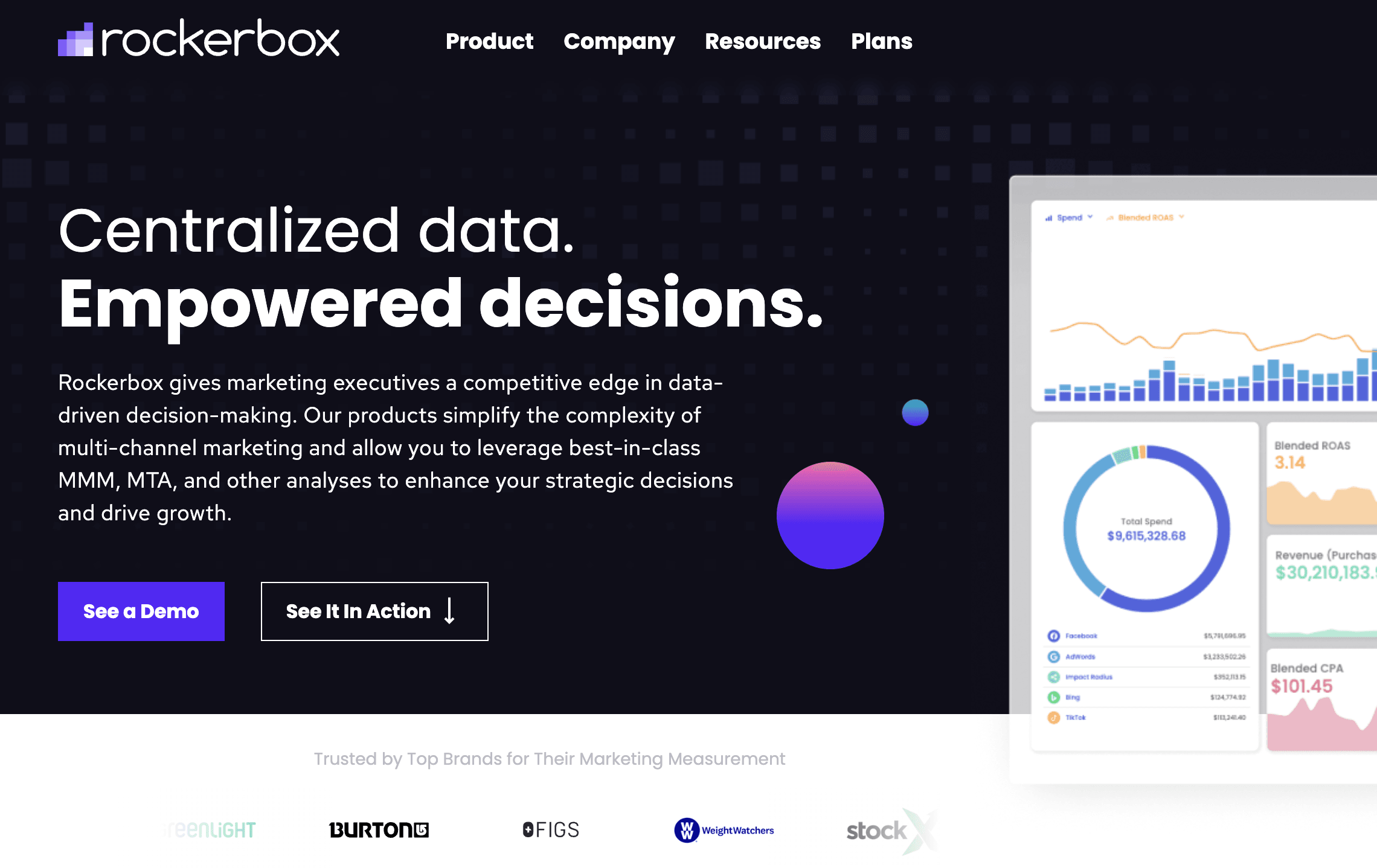
What Rockerbox does:
- Consolidates marketing channels: Rockerbox gathers data from various marketing platforms like Facebook Ads, Google Ads, and social media into one central location.
- Tracks website and ecommerce data: It goes beyond ad platforms and can also track what users do on your website and how it connects to their buying journey.
- Analyzes marketing effectiveness: By combining data from different sources, Rockerbox helps you understand which marketing channels are driving the most sales and conversions and predicts future sales as well.
👉 Who it's best suited for:
It's really best suited for Ecommerce brands who have a large number of channels - Think social ads, Google ads, TV ads, affiliates etc.
4) Recast
- Exclusively designed for DTC, Ecommerce brands, and complex businesses
- Pricing details are tailored to business needs
- Recast's clients manage over $1.2 billion in annual marketing spend
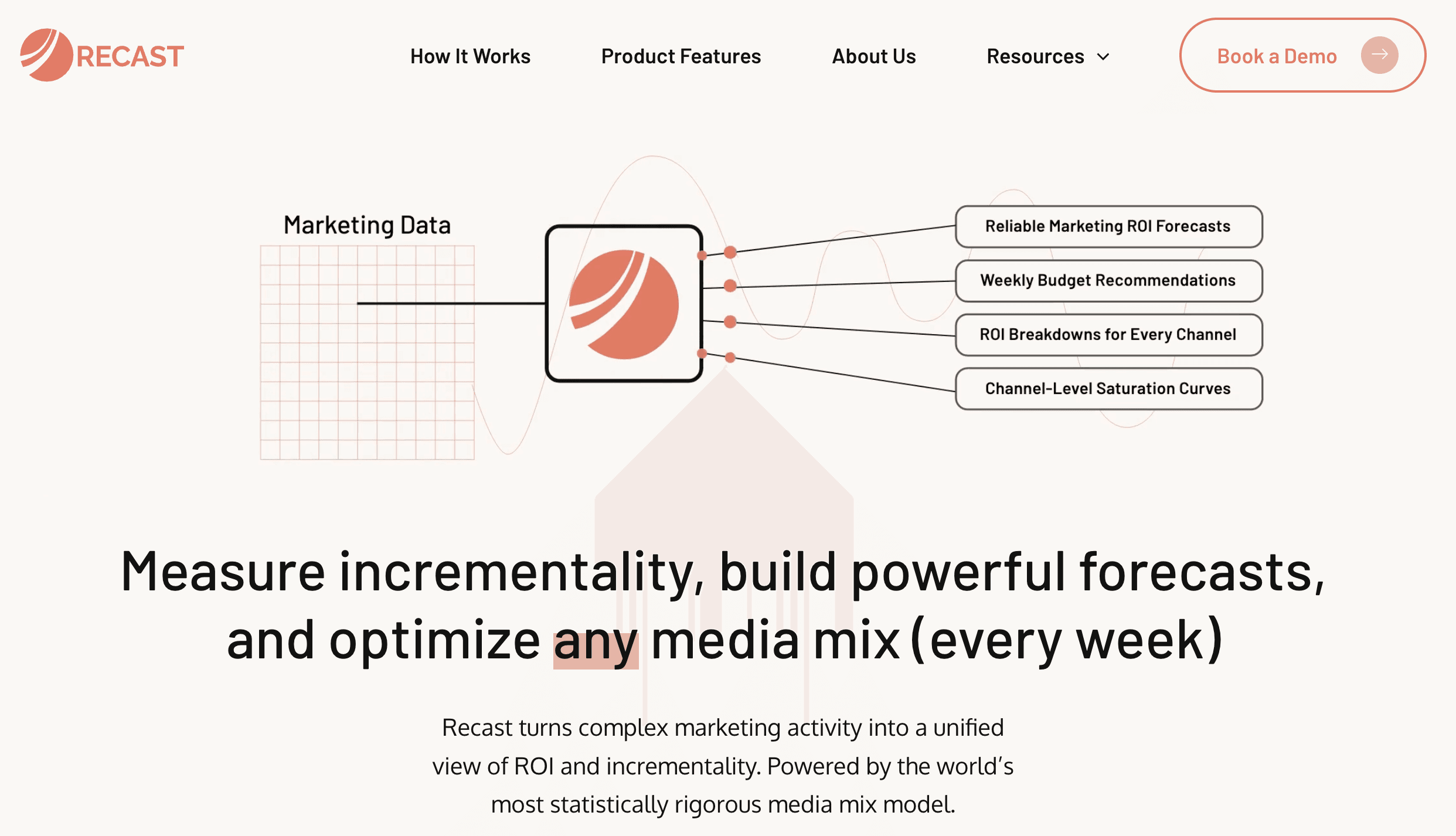
What Recast does:
- Streamlines marketing data integration: Recast consolidates disparate data points from online and offline marketing channels into a single, comprehensive view, helping businesses track the true impact of their entire media mix, including hard-to-measure channels like PR and influencers.
- Enhances real-time decision-making: With a platform that updates weekly, Recast offers continuous measurement of marketing incrementality, allowing for swift adaptations in strategy based on current performance.
- Provides advanced analysis for optimization: By employing a Bayesian media mix model developed by in-house PhD statisticians, Recast forecasts and optimizes media spending to improve ROI. This includes scenario analysis, budget optimization, and goal tracking tailored to specific business objectives.
👉 Who it's best suited for:
Recast is ideal for businesses dealing with complex marketing structures that include a blend of digital and traditional channels. It is particularly beneficial for those who need to navigate the challenges posed by new privacy regulations and diverse advertising platforms. Companies looking to precisely measure and enhance their marketing efficacy will find Recast's rigorous, privacy-friendly analytical tools indispensable.
5) OptiMine
- Their solution oversees substantial ad budgets across a variety of industries (not just Ecommerce)
- We don't love their user experience
- No clarity on pricing
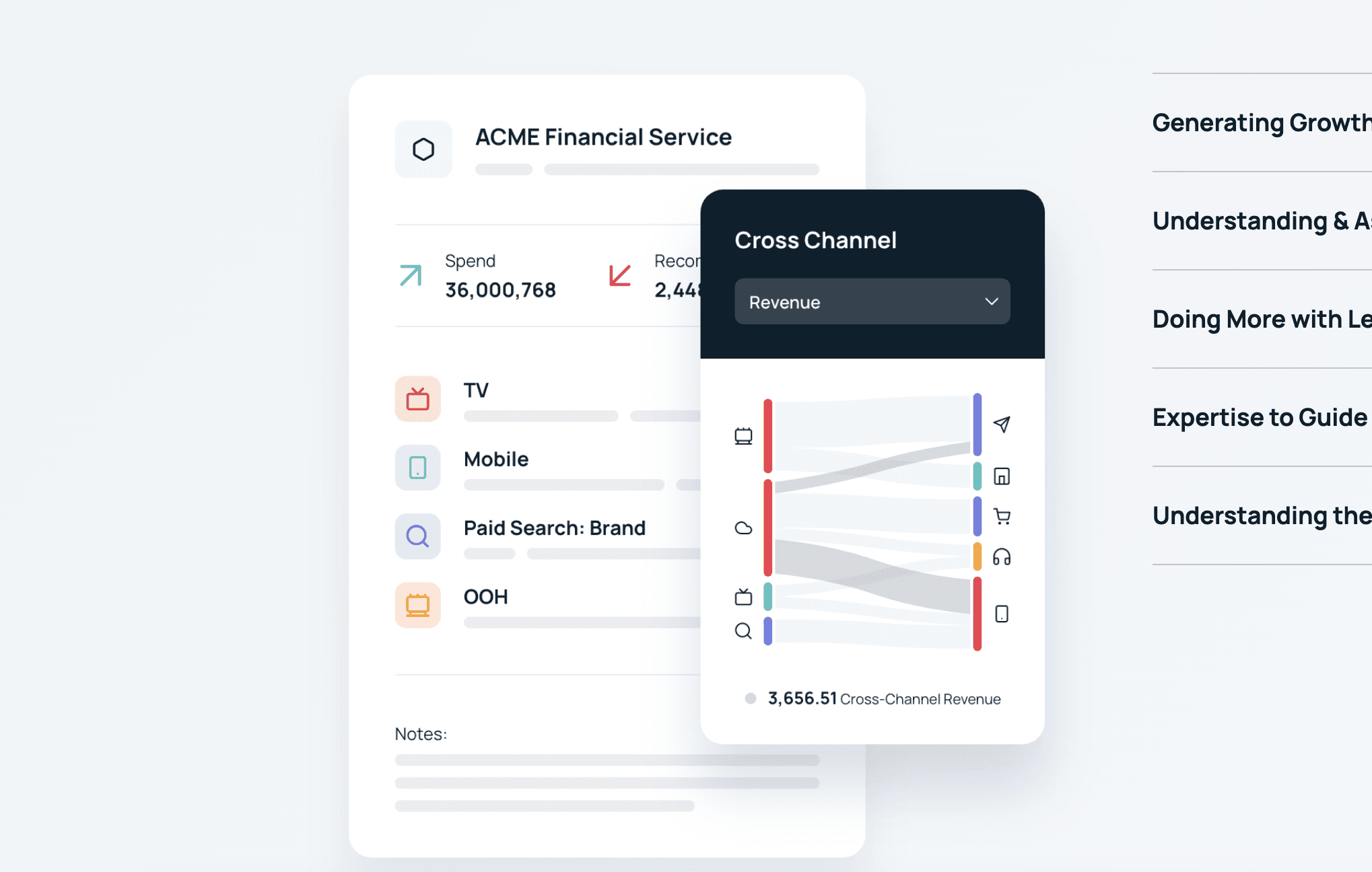
What OptiMine does:
- Delivers agile marketing measurement: OptiMine offers a solution for measuring bboth digital and traditional marketing channels. It provides detailed analytics down to individual ads and campaigns, ensuring quick and precise insights.
- Ensures privacy and future-proofing: With a strong emphasis on privacy, OptiMine's approach does not rely on personally identifiable information (PII), cookies, or tracking, making it a highly secure and sustainable choice for brands.
- Empowers with expert support: OptiMine combines its advanced technology with expert consulting, tailoring support specifically to each brand's needs and ensuring that every client can maximize their marketing effectiveness.
👉 Who it's best suited for:
OptiMine is ideal for brands and agencies that require detailed and rapid insights across both traditional and digital marketing channels. It is particularly beneficial for those concerned with privacy regulations and those needing a robust, scalable solution that provides both top-down views and granular, actionable insights.
6) Keen
- Specially designed for DTC, CPG, Hospitality, Retail, Travel, B2B, Alcohol, and Apparel industries
- Pricing begins at $10k/mo per brand, with comprehensive access to Keen experts, data uploads, and model updates
- Keen oversees marketing budgets across innovative brands globally
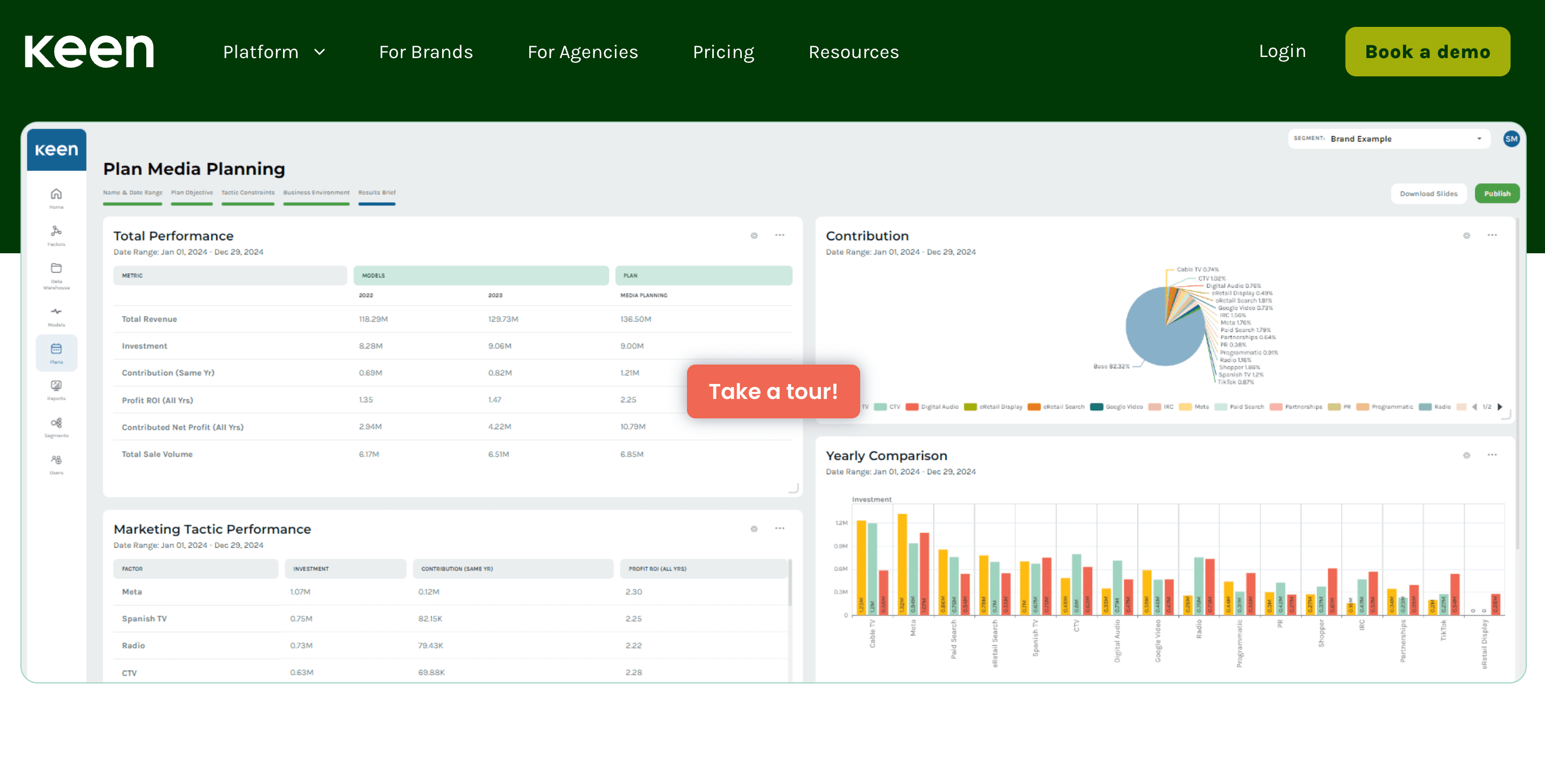
What Keen does:
- Enhances marketing investment with AI: Keen uses advanced AI to merge marketing measurement, media planning, and P&L forecasting, promising a 25% improvement in incremental revenue within the first year.
- Optimizes spending across multiple channels: Through its patent-pending Marketing Elasticity Engine, Keen optimizes the balance and interaction effects between top and bottom funnel marketing, retail media networks, and across digital and offline channels.
- Provides precise probabilistic forecasting: Keen's media planning solution offers optimized buying plans based on financial response curves, forecasting the range and probability of returns for marketing investments with a high degree of accuracy.
👉 Who it's best suited for:
Keen is ideal for brands and agencies looking for a data-driven approach to navigate complex marketing landscapes. It is especially valuable for those requiring robust forecasting capabilities and detailed scenario planning to drive profitable growth and optimize marketing investments effectively.
7) Foshpa
- Specifically tailored for D2C, eCommerce, and multi-channel brands looking for profitable growth.
- Pricing starts at $2,500/mo and is structured around monthly marketing spend.
- Typically costs around 2% of ad spend.
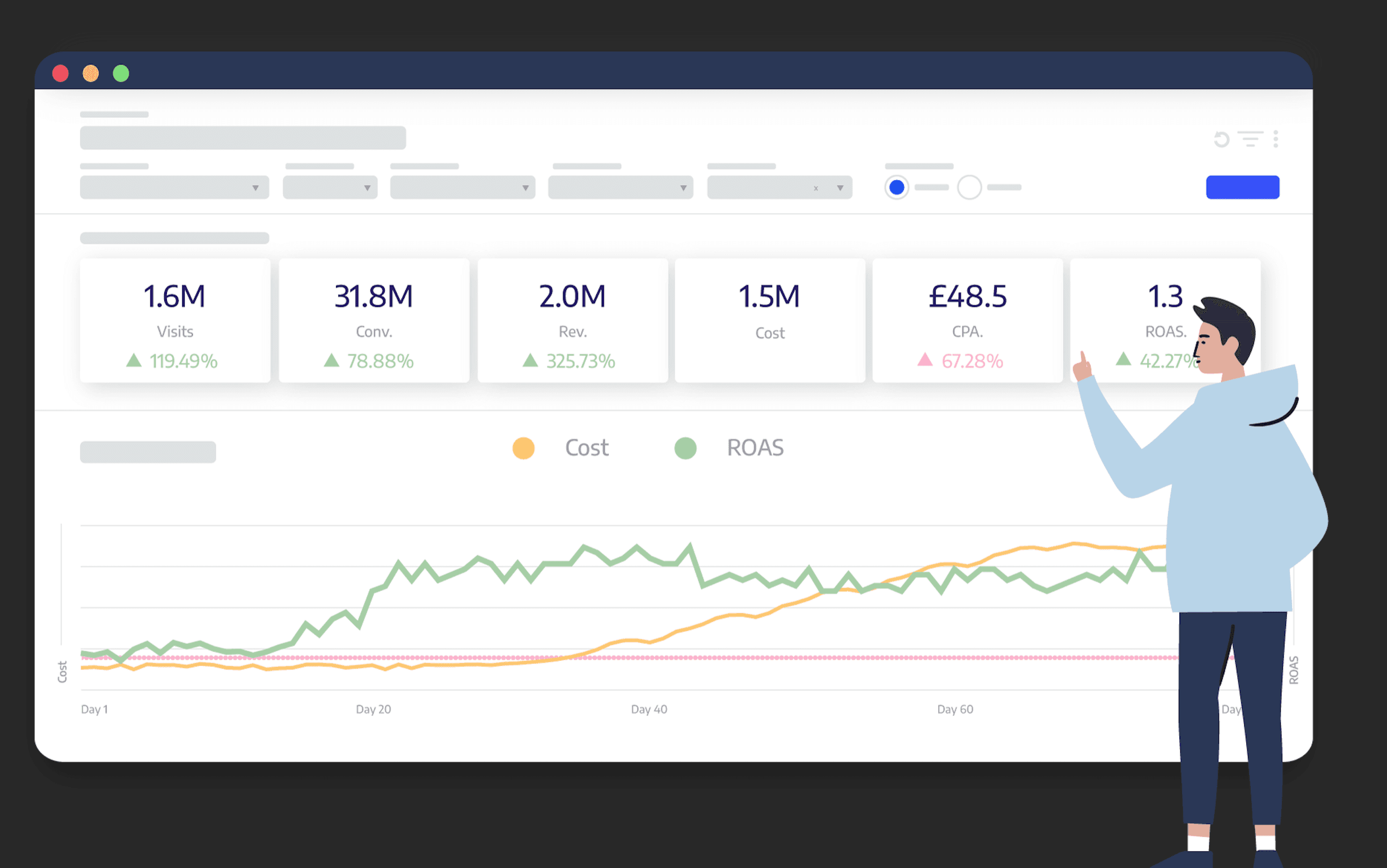
What Fospha does:
- Improves data accuracy: Fospha addresses the common issue of misattribution in digital marketing by tracking all clicks and impressions, ensuring that you accurately see what’s driving performance and where to allocate your marketing budget.
- Delivers quick, actionable insights: With a setup that takes just 10 minutes and a user-friendly interface, Fospha provides rapid insights without the need for coding, making it accessible for all marketers.
- Enhances decision-making with sophisticated modeling: Fospha uses advanced attribution modeling to measure the effectiveness of both top of funnel and performance media, incorporating data across all marketing channels for a comprehensive view.
👉 Who it's best suited for:
Fospha is ideal for marketing leaders who need to quickly understand their marketing mix and make data-driven decisions to optimize campaigns. It's particularly valuable for brands that are looking to move beyond traditional metrics and last-click attribution to gain a deeper understanding of their marketing effectiveness.
8) Lifesight.io
- Designed for multiple industries including Retail, B2B, SaaS, Fintech, Travel etc.
- Unknown pricing
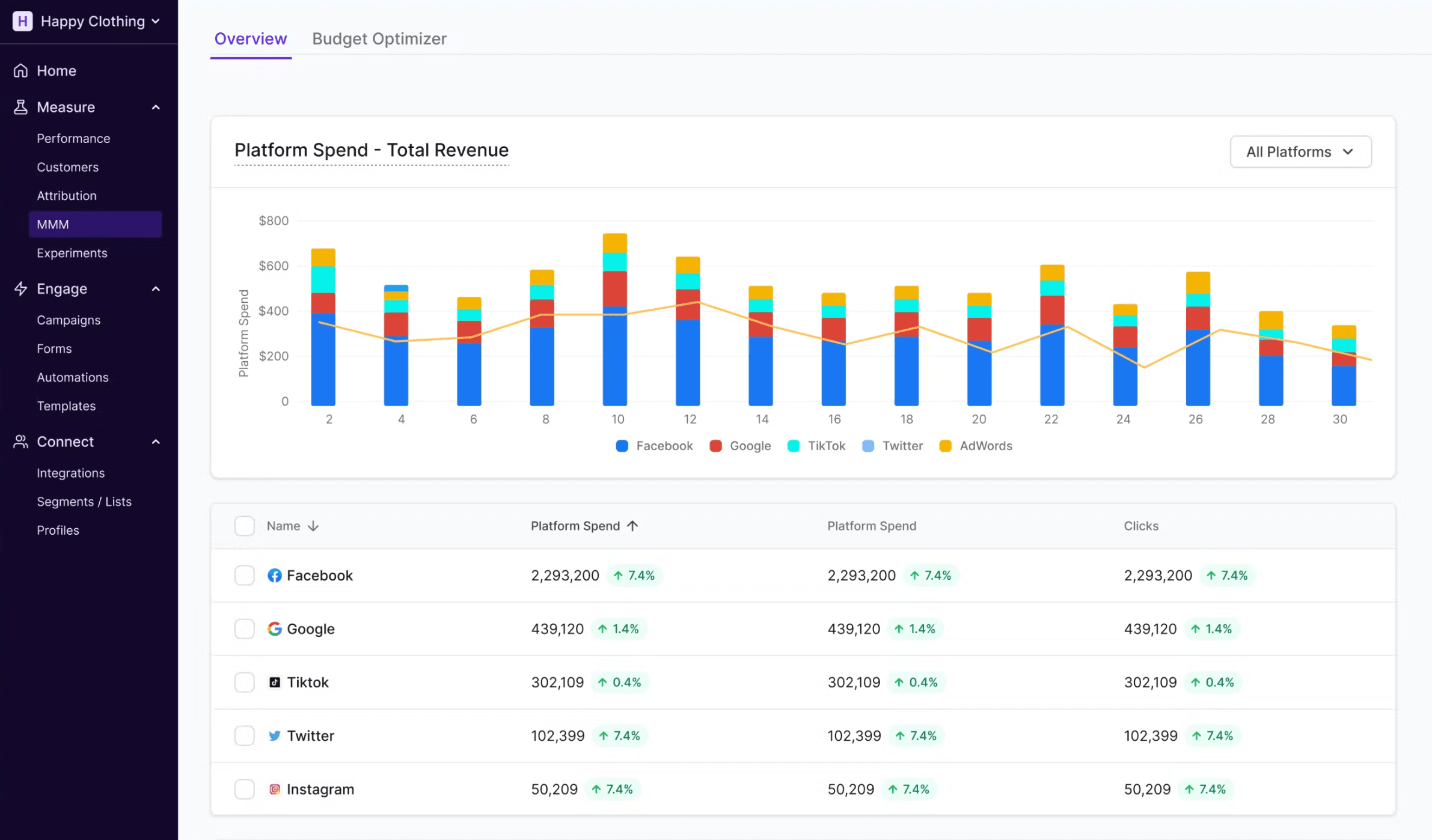
What Lifesight does:
- Uses advanced MMM software: Lifesight's Marketing Mix Modeling software is powered by AI, allowing for precise budget forecasting and optimization, ensuring that marketing dollars are spent for maximum impact.
- Offers real-time, actionable insights: With features that allow for the scaling of paid campaigns without ad wastage, Lifesight provides tools to dynamically allocate budgets and avoid diminishing returns.
- Enables comprehensive cross-channel optimization: Lifesight delivers deep channel-wise marketing analytics along with optimization recommendations, helping marketers adjust strategies across various platforms effectively.
👉 Who it's best suited for:
Lifesight is perfect for modern marketers who need a powerful yet flexible tool to measure and forecast marketing performance across multiple channels. It is particularly valuable for those who prioritize privacy and want to leverage AI-driven insights to make informed decisions that drive profitable growth.
9) Other MMM Tools
- Google Meridian: This has replaced LightweightMMM and is Google’s new MMM tool. Google's Meridian is an advanced, open-source media mix modeling (MMM) platform designed to enhance marketing measurement through Bayesian regression, geo-based hierarchical modeling, and the incorporation of ROI priors. It allows for sophisticated analysis with time-variant intercepts and integrates reach and frequency data to optimize marketing efforts. Meridian aims to provide detailed insights and dashboard outputs to improve decision-making in digital marketing.
- Robyn (Meta): This tool uses a different statistical approach (frequentist) and is built in the R programming language. It includes features to model trends, seasonality, and other effects, and uses a forecasting tool called Prophet for handling time-specific data like holidays.
- Orbit (Uber): Orbit (created by Uber) provides various forecasting models and can handle data differently over time, adjusting as new data comes in. On their blog, they mention that the most typical use cases are for marketing teams.
Understand MMM vs. MTA (Multi-Touch Attribution)
Most marketers use both MMM (Marketing mix modeling) and MTA (Multi touch attribution) to understand how their advertising spend is being used and what actions their customers take.
We'll show you the difference between both here.
Marketing Mix Modeling (MMM)
Marketing Mix Modeling (MMM): Imagine you’re a coach analyzing your soccer team’s performance (your marketing strategy) after a game (a marketing campaign). You don’t focus on every individual play; instead, you consider how the team (different marketing channels like TV, social media, billboards) performed as a whole. You also factor in external elements like weather (market conditions) and events (seasonal promotions) that might have influenced the game’s outcome. This approach gives you a broad, strategic view but not a play-by-play detail.
- Pros:
- Provides a big-picture analysis of how all elements contribute together.
- Captures data on hard-to-track elements that indirectly impact sales, like brand awareness from billboards.
- Cons:
- Lacks detailed insights on individual customer behavior.
- Slow to update; may miss rapid changes in market dynamics.
Multi-Touch Attribution (MTA)
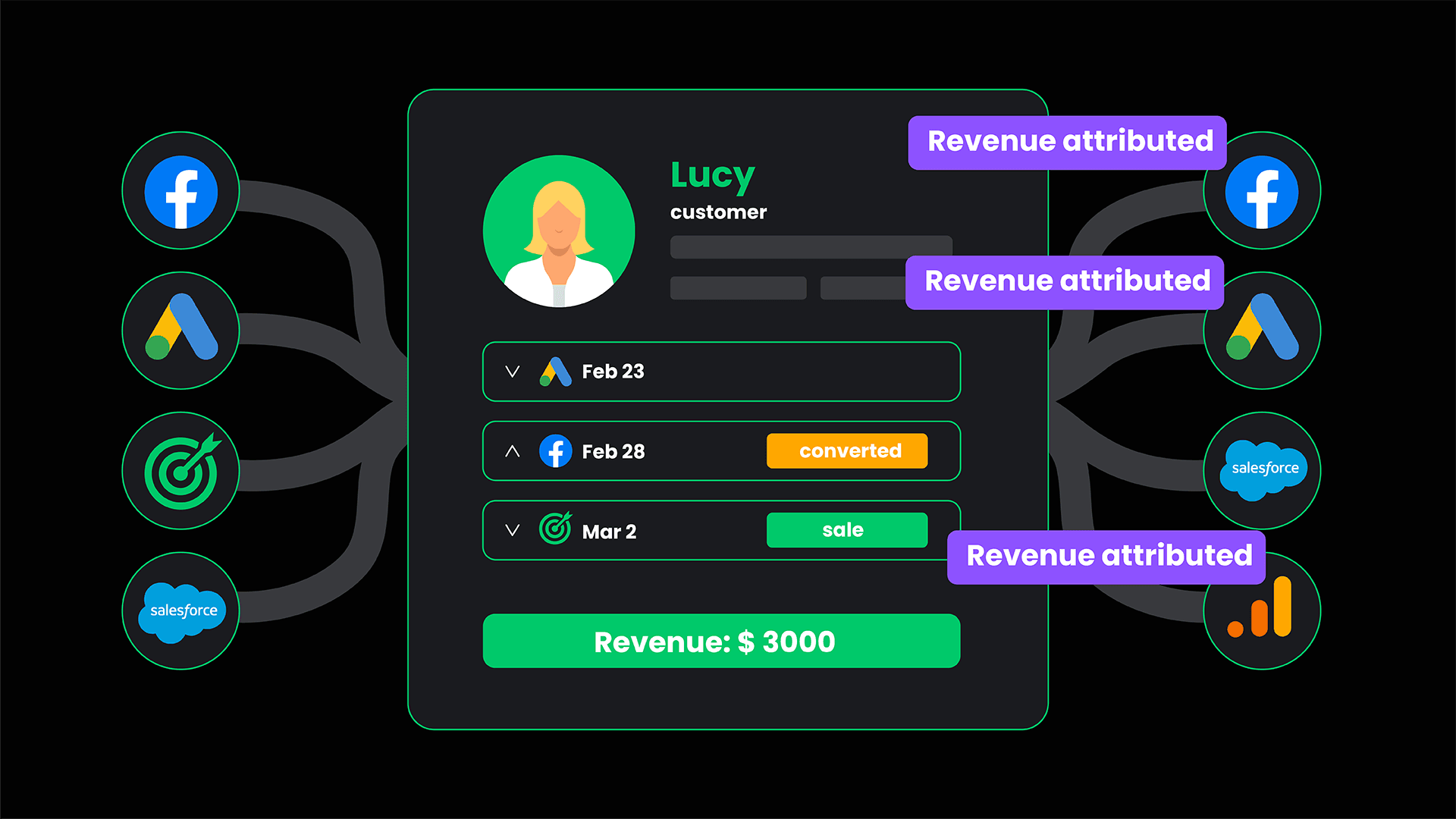
Multi-Touch Attribution (MTA): Now, imagine you’re focusing on one player (a customer) throughout a game, tracking their interactions with other players (marketing channels) from kickoff to final whistle. This method maps out the customer’s journey to the goal (a purchase), noting every significant touchpoint and its impact on the outcome.
- Pros:
- Provides detailed insights into individual customer paths and interactions.
- Quickly adaptable, allowing for real-time adjustments based on what’s working.
- Cons:
- Struggles with tracking non-digital or indirect influences like TV or print ads.
- May underestimate the importance of early or late touches in the customer journey.
Interplay Between MMM and MTA
In a business context, especially in B2B, it’s crucial to track every interaction due to complex sales cycles and the significance of relationship building, making MTA particularly useful. However, understanding broader marketing efficiency and budget allocation across channels and over time calls for MMM’s holistic view.
For an E-commerce Brand Example:
- Using MMM:
- You evaluate the overall effectiveness of different marketing channels over a year, considering external factors like seasonality and promotions.
- MMM helps identify which channels drive the most sales and how external factors like promotions or seasonal changes impact overall revenue.
- Using MTA:
- You track individual customer interactions from first contact to purchase, across various channels.
- MTA provides insights on which touchpoints were most effective at converting interest into sales, helping fine-tune marketing efforts in real-time.
MMM is like watching and assessing the entire soccer game to adjust team strategy, while MTA is like focusing on one player to understand and optimize their specific contributions to the game.
